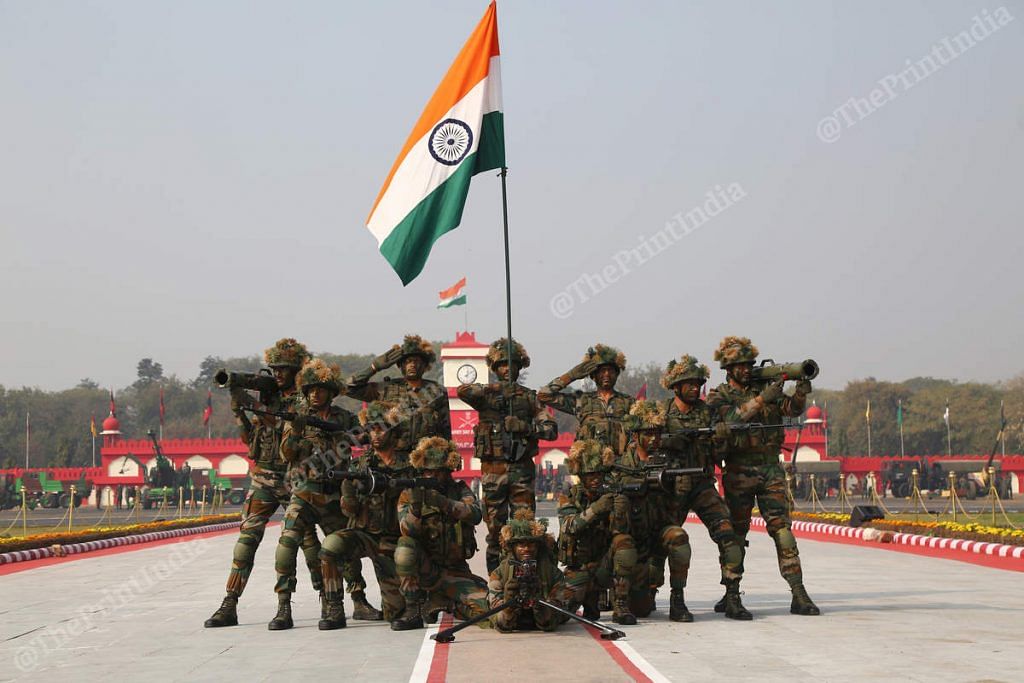New Delhi: The Indian military is actively deliberating on setting up a new joint training command to meet the training needs of all its three branches, the Army, the Navy and the Air Force, ThePrint has learnt.
While the location for the tri-service command is yet to be finalised, Nagpur is being discussed as an option, highly-placed defence sources said. The structure of the command is yet to be finalised.
The development has also put on hold for now the Army’s proposal to shift its training command ARTRAC from Shimla to Meerut, sources told ThePrint.
“The possibility of a joint training command for the three services is being deliberated upon. Shifting out ARTRAC from Shimla may not be relevant at this point,” a senior defence official said.
The official added that there would be discussions on how the existing training commands could be merged to form the new structure.
While the Army’s training command is in Shimla, the Air Force’s training command is located in Bengaluru. The Navy does not have a separate training command. All training-related establishments of the Navy come under the purview of the Southern Naval Command.
The move for a joint training command is a continuation of the process that began in 2018 when a joint doctrine for the services was released by former chairman of the Chiefs of Staff Committee (COSC) Admiral Sunil Lanba in the presence of then Army chief Gen Bipin Rawat and IAF chief B.S. Dhanoa.
Apart from stating that there should be a tri-service approach for modernisation of the three services, the joint doctrine had proposed joint training of personnel, unified command and control structure.
Also read: Army set to place order for 118 Arjun Mark 1-As, the most potent tank in its inventory
‘If you don’t train together, how do you operate together?’
A senior naval officer said a joint training command would bring all training policies and methodologies of the services and related foreign training under one office. They are currently scattered into tri-service and service-specific training for the services at different stages of a personnel’s career.
“A joint training command may help in arriving at a common policy for the services, thus increasing efficiency, saving money and increasing inter-services administrative ease of working,” the officer said.
Currently, after the basic training at the tri-services institute — the National Defence Academy (NDA) — select officers undergo a tri-service course at the Defence Services Staff College after 10-12 years of service. The officers then undergo a higher command course that is primarily service specific but has representatives from the other two services.
Some officers also get selected to a tri-service course at the College of Defence Management in Hyderabad, which is a parallel course to the higher command. After around 28-30 years of service, a select few officers are picked for a tri-services course at the National Defence College in Delhi.
This is apart from the various courses in friendly foreign countries that a few officers may undergo from time to time.
“After achieving certain career milestones, particularly after successfully completing the Defence Services Staff College course, an officer from any of the three services is expected to broaden his horizons beyond that of his own service,” the naval officer said. “Jointness in training, war-fighting, administration and operations becomes the keywords. A joint training command will enhance the desired jointness through commonality in training.”
Speaking to ThePrint, a senior Army officer said a joint training command would also help in the integration of training across the rank and file of the three services.
The officer said jointness in training would also lead to a congruence of the standard operating procedures (SOPs).
“For example, the IAF and Army aviation have different SOPs for flying similar aircraft under similar operational conditions,” the officer said. “It will also help in a shift in mindset from own service towards a common interest.”
Another Army officer said the joint training of the three services would go a long way in the operations and execution of jointness. “If you don’t train together, how do you operate together?”
The officer added, “For any cohesive new generation conflict management, integrated training designed towards jointness is the only prudent way ahead. It will not only ensure better execution of operations, but also enhance understanding of nuances towards optimal deployment.”
The officer also said the success of the first theatre command would, by and large, be dependent on the success of sustained training in jointness.
Also read: Indian Army, Air Force and Navy must work out a joint media policy for information warfare
